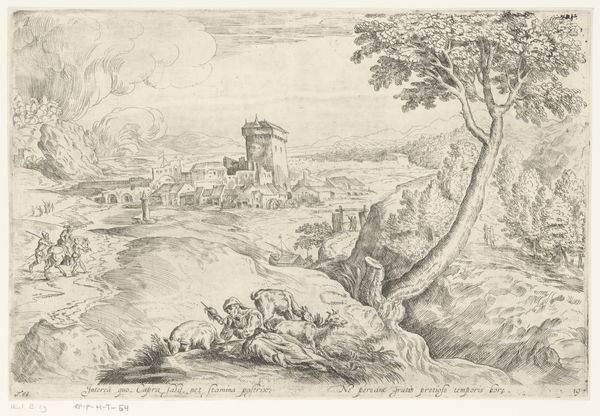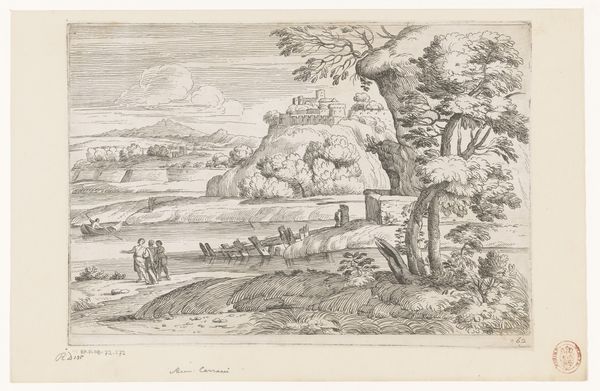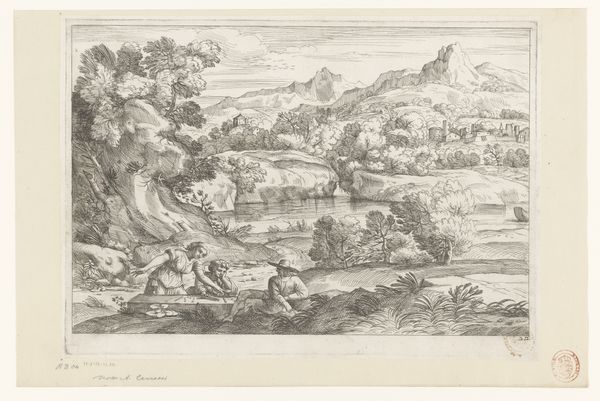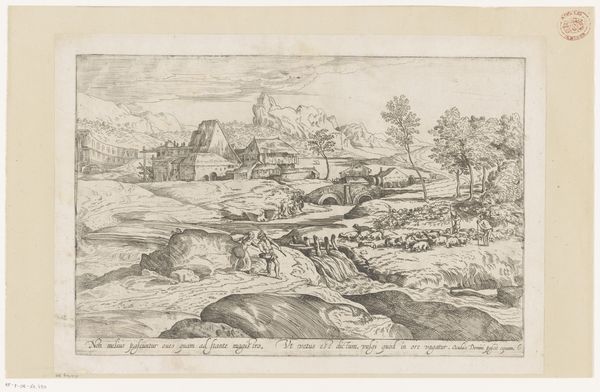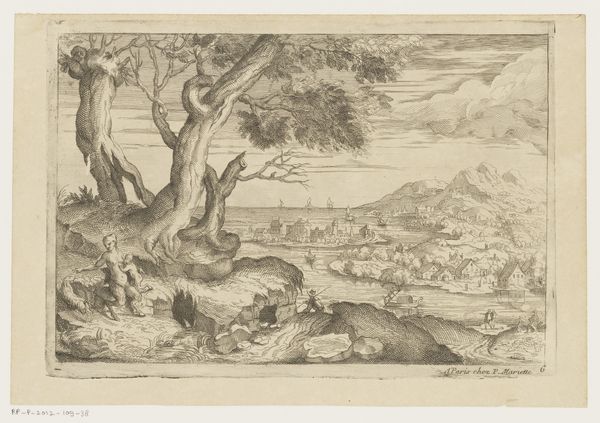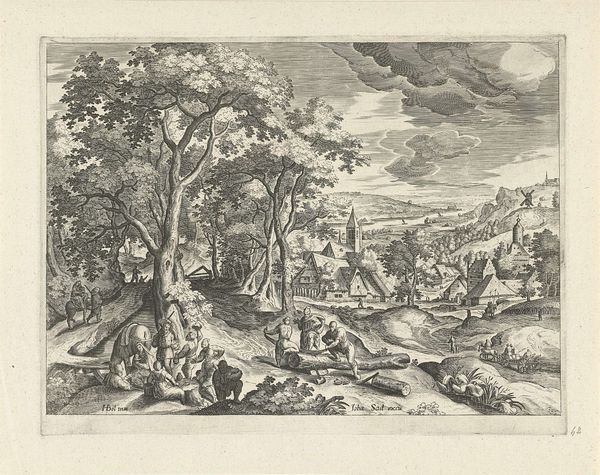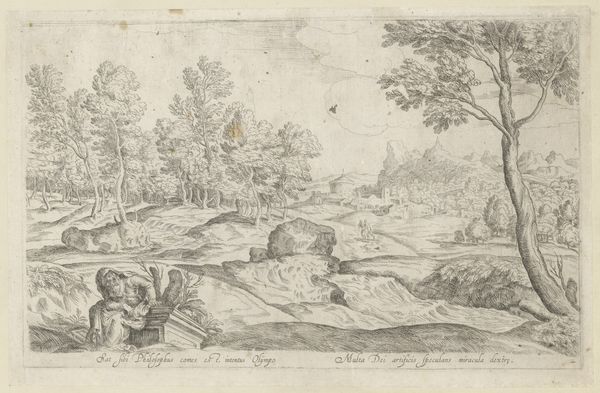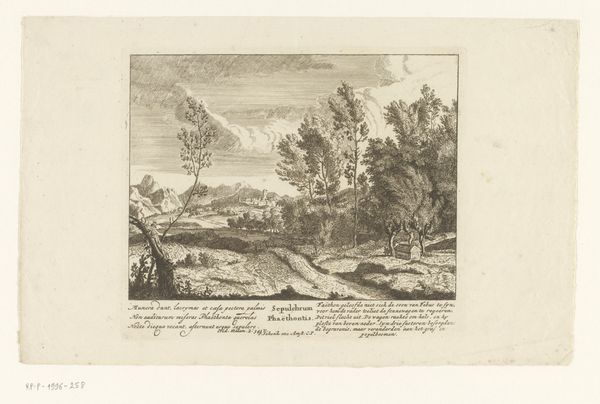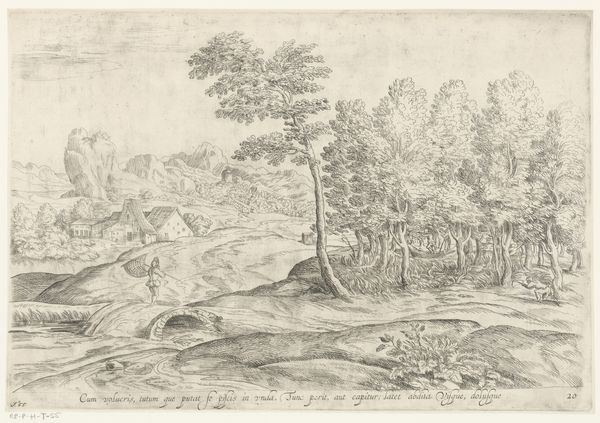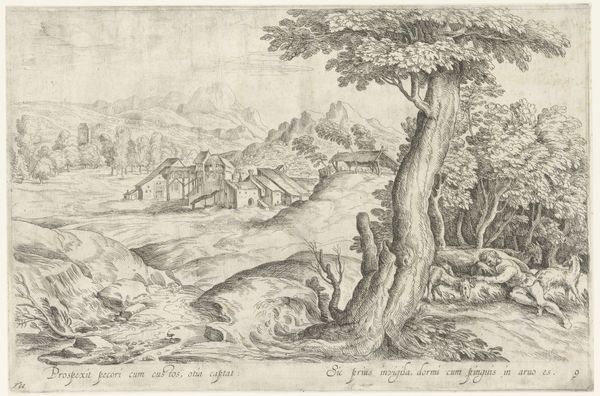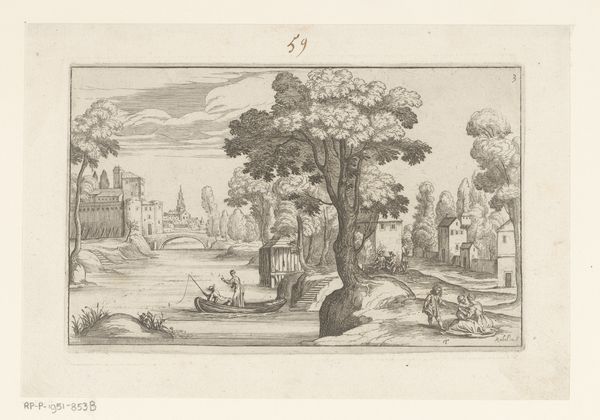
print, etching, engraving
#
baroque
# print
#
etching
#
landscape
#
engraving
Dimensions: height 260 mm, width 385 mm
Copyright: Rijks Museum: Open Domain
Editor: This print, titled "River Landscape with Village in the Background," from around the 17th century, is rendered in etching and engraving. It's quite delicate, almost dreamlike in its rendering of the countryside. I’m struck by the level of detail achieved through these printed lines. What catches your eye when you look at this landscape? Curator: I am particularly drawn to the method of production itself. Consider the labor involved in creating such an intricate matrix. Each line is the product of a physical process, and represents human involvement and the use of specialized tools and the cultural value attached to both craft and distribution during this period. Editor: So you're more interested in the creation of the print itself, rather than just the scene it depicts? Curator: Exactly. This print gives us a peek into 17th-century craftsmanship, where the material realities of creating and distributing prints informed the art market. Editor: It's fascinating to think of it that way - seeing the landscape as almost secondary to the labor. Does the printing process then affect our interpretation of the "nature" depicted in this "landscape?" Curator: Precisely. The choice to render the scene through etching and engraving transforms our engagement with the landscape. Each printed impression is no longer an unique original work, and each copy extends a reach, reflecting and shaping broader ideas about nature, ownership, and aesthetics within its social context. Editor: I hadn't considered the social impact, how widespread this image might become as a commodity in its own right. It changes my understanding of the relationship between the artist, the landscape, and the viewer. Curator: Understanding the techniques and distribution helps us to analyze the role that "art" plays in its time. Editor: Thank you; I will view these works in a new way now, seeking clues about materiality and reception.
Comments
No comments
Be the first to comment and join the conversation on the ultimate creative platform.

